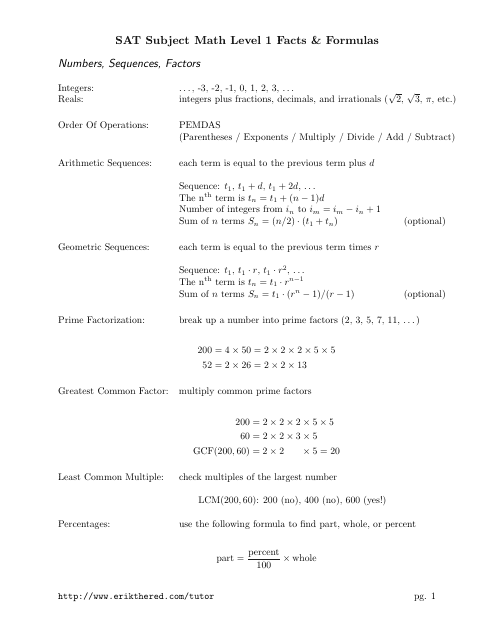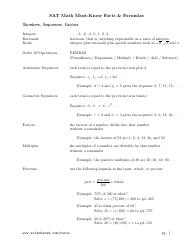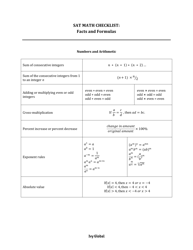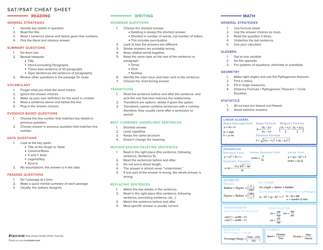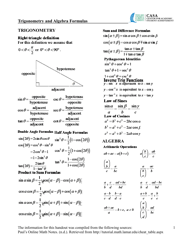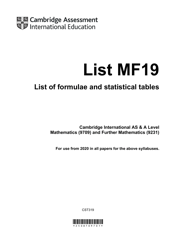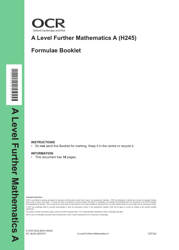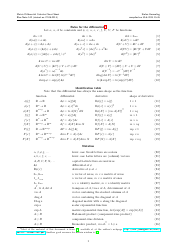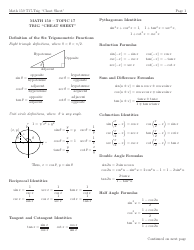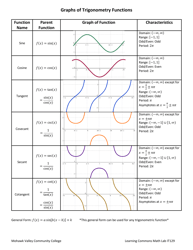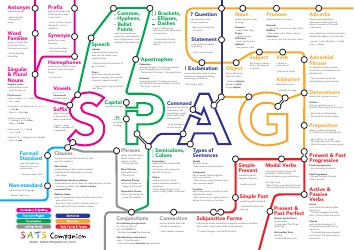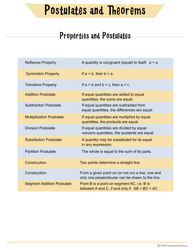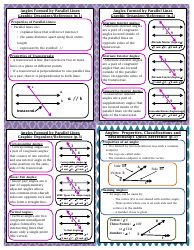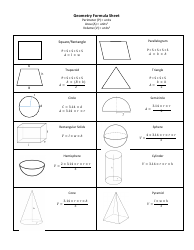Sat Math Level 1 Cheat Sheet
A SAT Math Level 1 cheat sheet is a quick reference guide that provides students with key formulas, concepts, and strategies for solving math problems on the SAT Math Level 1 test. It serves as a handy study tool to help students review important math topics and improve their test performance. It is not an official document provided by the College Board, but rather a resource created by students or educators to assist with test preparation.
FAQ
Q: What is the SAT Math Level 1 exam?
A: The SAT Math Level 1 exam is a standardized test administered by the College Board, typically taken by high school students who excel in math. It assesses mathematical knowledge and skills relevant to college-level math courses.
Q: Why should I take the SAT Math Level 1 exam?
A: Taking the SAT Math Level 1 exam can strengthen your college application, especially if you plan to pursue a math-related field of study. It can demonstrate your proficiency in math and highlight your academic strengths.
Q: What topics are covered in the SAT Math Level 1 exam?
A: The SAT Math Level 1 exam covers a range of topics including algebra, geometry, trigonometry, and basic statistics. It also includes questions related to functions, graphs, and coordinate geometry.
Q: How long is the SAT Math Level 1 exam?
A: The SAT Math Level 1 exam is 60 minutes long, and it consists of 50 multiple-choice questions.
Q: How is the SAT Math Level 1 exam scored?
A: The SAT Math Level 1 exam is scored on a scale of 200-800. Your score is determined by the number of questions you answer correctly, and there are no penalties for incorrect answers.
Q: Can I use a calculator during the SAT Math Level 1 exam?
A: Yes, you are allowed to use a calculator on the SAT Math Level 1 exam. However, it is important to note that not all questions require a calculator, and using effective mental math strategies can also be beneficial.
Q: Are there any SAT Math Level 1 exam tips I should keep in mind?
A: Yes, some general tips for the SAT Math Level 1 exam include managing your time effectively, reading each question carefully, using process of elimination for multiple-choice questions, and practicing pacing during your preparation.
